|
If your food safety values aren’t second nature to your team, there are steps you can take to improve your culture. A Fast Casual report by the president of Steritech advises operators first explain the why behind each food safety practice they preach — i.e. hearing that bacteria can spread more easily and cross-contaminate food when chicken is stored on the wrong refrigerator shelf is more compelling than hearing that chicken must always be stored on the bottom shelf. Next, celebrate wins. Five Guys, which has conducted research into communication practices that engage employees, offers monetary rewards and other incentives to stores that score highly on safety assessments. Chicken Salad Chick celebrates top performers at an annual banquet and funds parties for top-performing stores. Along those lines, focus significantly more on positive feedback than on negative. Harvard Business Review research found that reinforcing six things someone does well for every individual item that needs improvement leads to better overall performance.
Identifying and halting foodborne illness quickly takes a 360-degree approach, with restaurants looking both internally and externally for signs of trouble. Chick-fil-A recently unveiled a system that uses social media and artificial intelligence (AI) to identify such threats. Venture Beat reports that the brand is using algorithms to scan social media sites for potential food safety problems at its 2,400 restaurants across 47 states. Every 10 minutes, the AI framework reviews data from 10 social media platforms, then scans it for 500 different terms, ranging from “food poisoning” to “nausea”, that can provide clues to a food safety issue at a restaurant. The terms are also reviewed by AWS Comprehend, Amazon’s natural language processing service, for sentiment and legitimacy. Managers are alerted to problems via push notifications and can contact customers directly via social media to investigate the issues. To date, the brand reports a 78 percent accuracy rate for the system.
It’s easy for cross-contamination to happen at the grill, particularly when you have produce, proteins and different marinades in close proximity and vying for a limited amount of cooking space. The Academy of Nutrition and Dietetics recommends cooks start with a grill that is clean and free from any charred bits of food that may spread bacteria. Make sure you have separate plates, trays, tongs, basting brushes and other cooking utensils for cooked and uncooked foods, and wash them with hot, soapy water between uses. When using marinades, keep a separate container of marinade for use on cooked items and discard any marinade covering raw proteins. Finally, use paper towels or wipes — not dishtowels — to clean up any spills
If you’re operating a food truck or a food festival stall this summer, your food safety practices will be front and center for consumers. Make sure your preparation area is tidy and that you have your foodservice license or inspection certificate displayed. If you don’t have immediate access to a sink for handwashing, have a clear protocol for handling money and serving food separately, including the use of gloves and tongs. Be mindful of exposure to heat and make sure to monitor the temperature of any ingredients that need to stay at the proper temperature — particularly TCS foods like meat, dairy, sliced fruit and cooked vegetables — since foods can easily slip into the danger zone on warm days.
When monitoring the temperature of food, the only gauge to trust is a food thermometer inserted into the food in question. As Statefoodsafety.com reports, you can get an inaccurate measure if you rely on the temperature reading of the equipment used to heat or cool the food, or the thermometer reading of the water that may surround the food in its serving container. Make sure any hot-held food reaches at least 135˚F and cold food stays 41˚F or cooler.
E. coli and leafy greens can be a common pair. Outbreaks tied to romaine lettuce contamination made headlines throughout the past year, and according to the FDA, similar outbreaks were linked to leafy greens an average of three times a year between 2009 and 2017. Foodservice operators can help limit the risk of contamination during preparation by taking several precautions. Statefoodsafety.com advises food handlers wash leafy greens thoroughly, serve only pasteurized dairy products and juices, and avoid cross-contamination via hands or preparations areas. That means cleaning and sanitizing work surfaces, particularly after working with raw animal proteins, and if you wear gloves, wash hands and put on a new pair of gloves when preparing a different food. Finally, be mindful of the temperature of meat you prepare. Ground beef should maintain a temperature of 155°F for 15 seconds before serving.
Your food inspector isn’t the only person scrutinizing your safety practices. Your guests evaluate you too — and there are a number of areas in your restaurant that, if mishandled, can alert people to the possibility of more serious problems. The Food Network talked to dieticians for tips on what to watch out for. In addition to the more obvious signs of a problem — dirty bathrooms, tables and menus, for example — be extra vigilant if you have a salad bar or buffet where foods are sitting out at room temperature. Any hot foods should be served hot. Finally, your staff can send the wrong message if they don’t take allergies or food sensitivities seriously, or if they are careless about handling money and food.
If you had a norovirus outbreak at your restaurant, how would you make sure you effectively removed pathogens from your operation? A recent Food Safety Magazine notes that since there are not universal procedures for cleaning up after an outbreak, it can be an extra challenge for the 70 percent of foodservice operations that are independently owned and operated. Since affected surfaces need to be not just sanitized but also disinfected after cleaning following an outbreak, the usual cleaning protocols may not suffice. Use this chart as a reference to ensure you contain and properly disinfect the different affected areas of your establishment.
As menu items with fresh chopped vegetables and fruit become more popular in warmer months, remember that as soon as you cut into them, they could well become time/temperature control for safety (TCS) foods. StateFoodSafety.com says cut leafy greens, raw sprouts, protein-rich vegetables, and sliced melons and tomatoes are some of the most common TCS foods. To keep them safe, they advise that ready-to-eat foods be eaten within four hours. Cold TCS food can be served for six hours as long as its temperature stays below 70˚F. Discard the food after four hours if you have not checked the food’s temperature at regular intervals.
|
subscribe to our newsletterArchives
April 2024
Categories
All
|

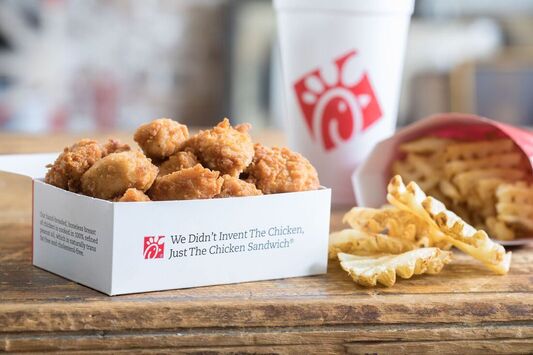


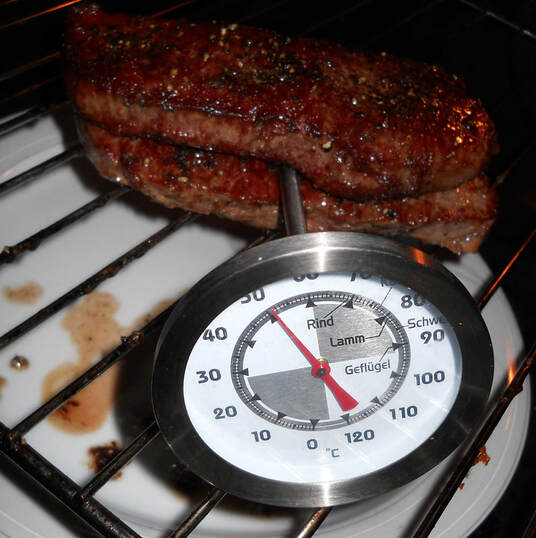


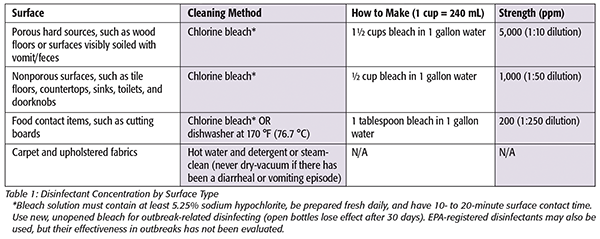
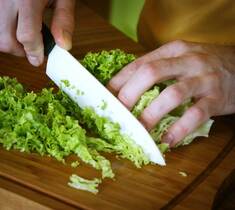
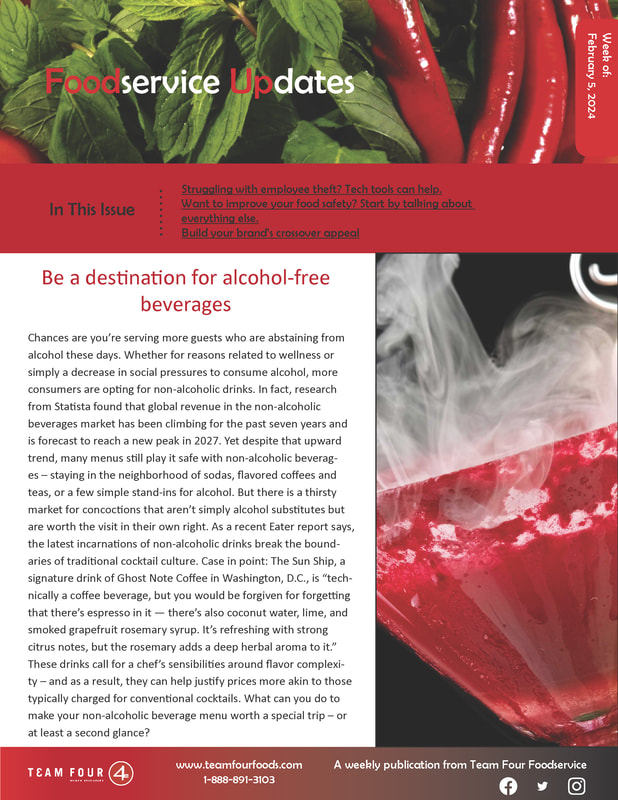

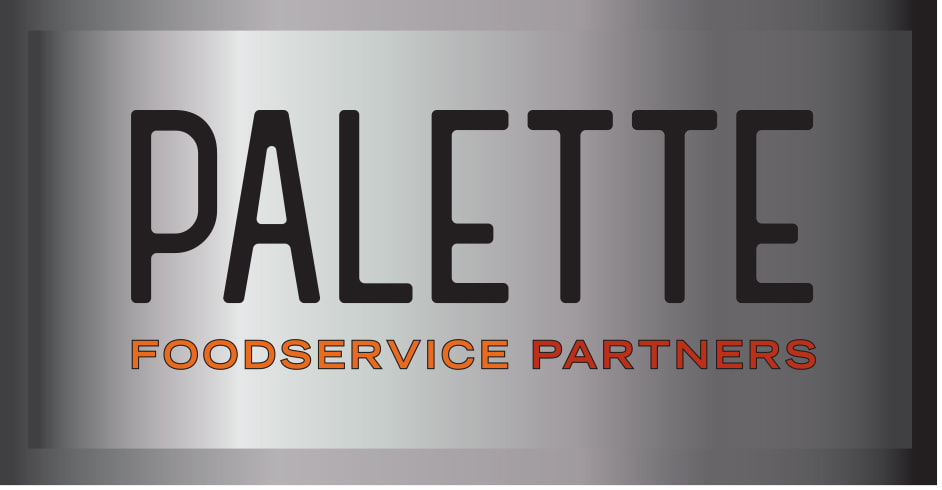
 RSS Feed
RSS Feed